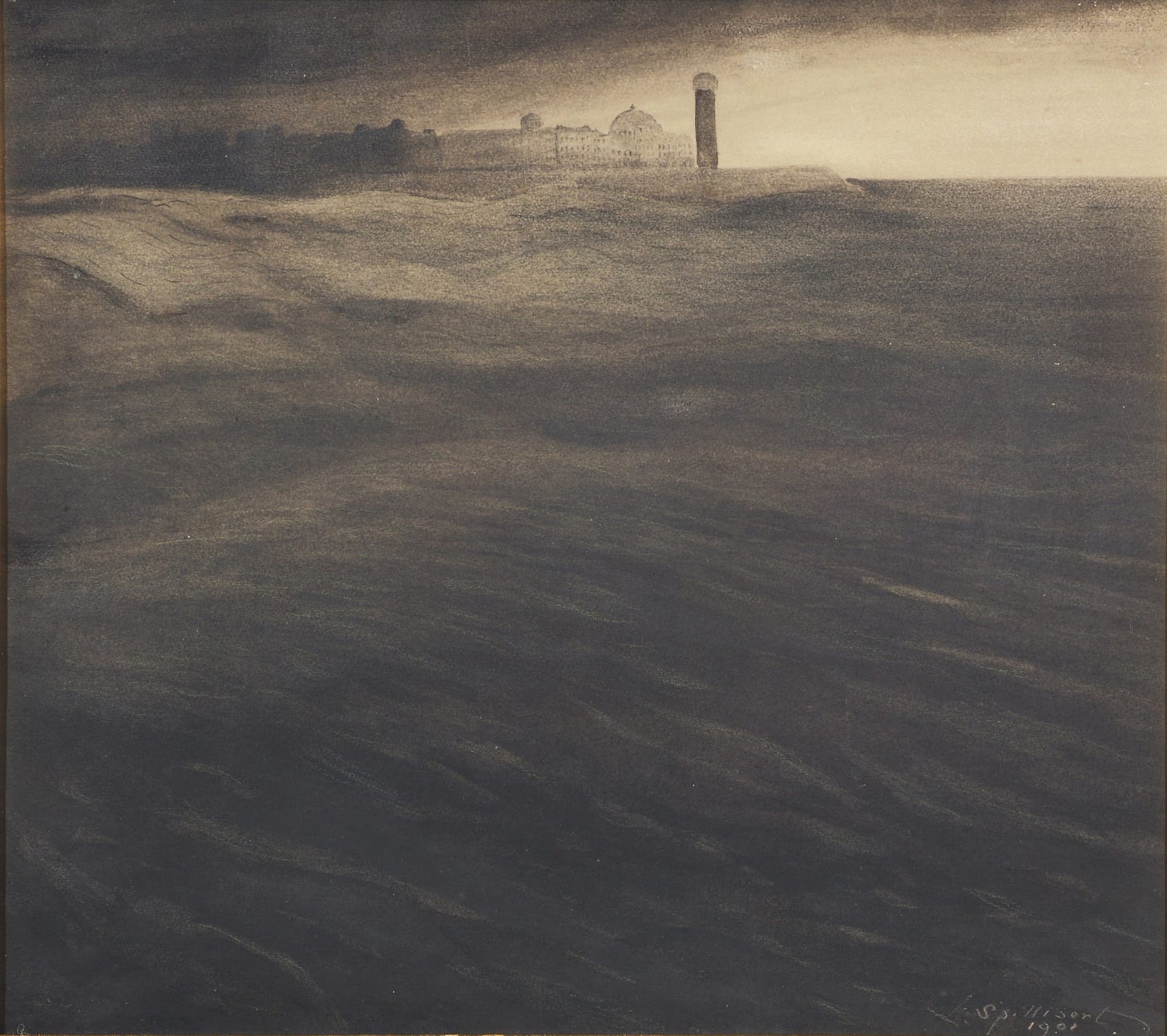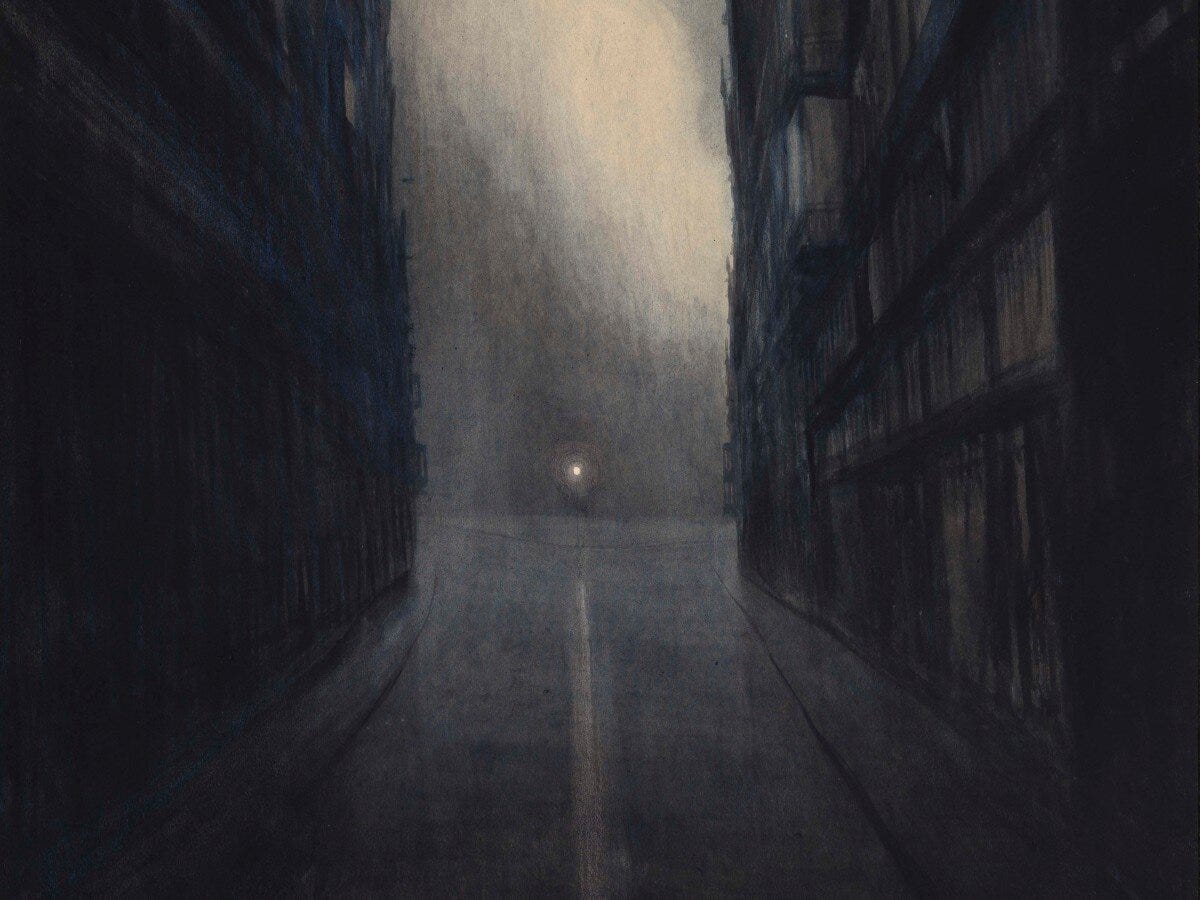How "Concrete Island" by J. G. Ballard Echoes the Purgatory of Childhood
Fantasy reminds us of how Child World can feel truly inescapable
I recently read a short novel by J. G. Ballard called Concrete Island. The story follows a wealthy businessman who gets trapped on a traffic island between two segments of highway and a fence after crashing his car. Though it seems like only a minor setback at the time, the businessman quickly realizes that his injuries, his fatigue, and other unfortunate quirks of his situation make it nearly impossible for him to escape. The rest of the novel is a sort of Kafkaesque survival story.
I didn’t love Concrete Island, but I’ve been reflecting on how the novel evokes certain aspects of childhood, particularly the purgatorial nature of built environments. Since children are far more restricted by physical barriers (both physically and societally) than adults, the constraints of Ballard’s Concrete Island bear a striking resemblance to the constraints of Child World.
The fence in Concrete Island may have been a trivial obstacle to the protagonist under ordinary circumstances, but a child would see it differently. An adult authority figure in Child World can imbue a physical barrier with almost mystical qualities. It’s not the physical properties of the fence that prevent children from escaping recess, it’s the connection to an adult and the all-powerful authority that it represents. Children can’t go past the fence because it’s against the rules.
In both Concrete Island and Child World, these more immediate barriers have a big impact on the setting’s atmosphere. It makes everything feel more fantastical, liminal, purgatorial. This atmosphere is key to Concrete Island, because the novel notably lacks fantastical or futuristic events. You could in fact get stranded in the middle of a traffic triangle if the conditions were right. But even though it takes place strictly within the realm of the possible, Concrete Island always feels like speculative fiction rather than realism due to the inescapability of its setting.
Authority is not the only thing that gives barriers their resonance in Child World. It is also a matter of agency: a child lacks a coherent vision for what actions are possible and impossible for them to undertake. A child’s “impossible” is more akin to an adult’s “very unlikely”— they simply don’t have the experience or knowledge to firmly rule out possibilities. The “impossibility” of hopping the fence at recess might not be all that different from the “impossibility” of taking flight.
Some of my memories highlight just how incoherent my conception of impossibility was as a child. One such memory recalls the YMCA Kids Zone, a supervised play area that I lived in while my parents went to go exercise. The Kids Zone was surrounded by glass walls and a closely-guarded door, while the exercise area was behind a gate and child entry was Strictly Off-Limits. But despite this separation of worlds, if I climbed high enough inside the jungle gym, I could see my parents exercising from afar. This was pretty disorienting. It felt like being inside of a fishbowl.
Visibility was very important to me as a child. In general, if I could see an area, I knew I could go there. By the same token, if an area was behind a barrier, then there was no way to see inside. But in this case, my parents went through a Strictly-Off Limits area that I couldn’t see, and emerged into an Strictly Off-Limits area that I could see. This was clearly a place where adults were acting as though no children were around, and yet I could see it. My ideas of the possible and impossible started collapsing. It just really didn’t feel possible that I could be seeing inside such an exclusive place.
The only frame of reference I had was watching something on TV. I was vaguely aware that the inside of a TV was some kind of alternate dimension through which I could view Strictly Off-Limits locations. I knew this wasn’t the same as TV, but I was able to reconcile my ideas of possibility and impossibility by filing the situation away as “it’s like TV”. I figured that the exercise area was probably just some viewing screen beyond my comprehension rather than an actual location just beyond the glass.
When we become adults, the impossible becomes far more defined. We start adopting a shared idea of the impossible that is very specific. Certain things simply are and certain things simply are not. This allows us to make much more informed decisions about how to act. It is easy to scoff at children who have not yet learned to make this distinction, especially when it leads them to pursue obviously unachievable goals.
But this distinction comes at a cost. As we get used to this idea of the impossible, we start over-applying it for the sake of simplicity. Many events that are simply unlikely (i.e. becoming an astronaut) acquire the “impossible” label in our minds in order to free up mental space for the task at hand. This behavior is rewarded in the form of greater predictive power, but it also limits our ability to imagine, even within the domain of the possible.
As a result, the purgatory of built environments is replaced with the purgatory of normative environments. We lose the strange feeling of waiting around to be picked up from summer camp, but we gain the strange feeling of an unexpected delay at the DMV. Sometimes the social scripts of our world feel far more inescapable than they really are, just as the physical barriers of the world restrained us in childhood.
Let’s say your company is hosting some required corporate icebreaker that has gone sour. Even the team-building facilitator wants relief from their HR-assigned activities. In this situation, you want something different, and you certainly have the power to change things (let’s have a dance party!). But you will most likely be locked in place by the social norms of the situation. Even if it would benefit everyone present and serve the goals of the event, it would feel weird, inappropriate, unprofessional.
Now imagine being in that same situation as a child. Suddenly, the purgatorial feeling of corporate captivity has disappeared. A group of children doesn’t generate that same atmosphere, because it would last for all of a minute before one of them runs up to the front and shouts, “This is boring! I have a better idea!”. Children are easily restrained by many things, but boring adult scripts are not one of them.
Because children have no concept of a “normal” life or the “proper” way to behave. A child might think that they are going to be the president one day and an astronaut the next. This makes them immature, but it also gives them great power: “impossibilities” of reality have no hold on them.
Obviously the limitations of adulthood are mostly founded in fact. But their logical sheen can distract us from the big picture. Any ambitious goal needs at least a bit of that childlike freedom from constraints. Landing a dream job may be difficult, but it isn’t as impossible as most of us probably declare it to be.
The character arc in Concrete Island complements that of another fantasy book I read recently: The Beginning Place by Ursula K. Le Guin. In The Beginning Place, two young adults named Hugh and Irene are dissatisfied with their dead-end jobs and general life direction. Their sole place of refuge is the woods, which houses the fantasy land of Tembreabrezi.
While the island of Ballard’s novel is an unexpected Kafkaesque horror, Tembreabrezi is an unexpected oasis in the desert of the protagonists’ lives. Time slows to a crawl in Tembreabrezi, and the tight-knit society allows Hugh and Irene to feel like a part of something special. But Tembreabrezi eventually betrays them, leading the two to realize that it is not the solution to their problems.
However, being forced to confront their fears in a fantasy land gives Hugh and Irene a fresh sense of what is “possible”. Armed with this mindset, they are able to tackle the mundane problems plaguing their normal lives. (For more on The Beginning Place, see
’s article below.)Concrete Island takes a different turn. At the beginning of the novel, the protagonist is constantly thinking about how his absence is being received at work or what his family is thinking right now. But as his time on the island stretches on, these concerns are replaced by something more primal. By the end, he has different priorities in mind:
In some ways the task he had set himself was meaningless. Already he felt no real need to leave the island, and this alone confirmed that he had established his dominion over it.
—J. G. Ballard (from Concrete Island)
Instead of turning towards his real problems, the protagonist goes in an entirely new direction. He realizes that his societal circumstances are not as core to his identity as he once thought. He learns what he is once his family, prestige, and possessions are stripped away, and he will never be able to return to the person he was before. In both novels, formidable obstacles allows characters to cast aside their old identity and evolve into the person they were always capable of becoming.
Despite their many differences, Concrete Island and The Beginning Place both force us to confront the boundaries of the real world by turning mundane lives into something fantastical and alien. These strange circumstances make us realize that some of the barriers of our own world are not as impermeable as they seem. Slaying a mythical beast may still be impossible, but perhaps that big move to New Zealand is not.
Fantasy reminds us that the understanding of adulthood doesn’t come for free. If we ignore the new barriers that get erected by adulthood, we risk being just as hemmed in as schoolchildren inside of a fence. Remembering how our childhood selves once found certain settings inescapable is not just an exercise in cognitive empathy— it can also give us the tools to escape the restrictiveness of our adult lives.










You didn't love concrete island? I can't remember much of the story, but I found the setting so vivid. We have all driven past so many of those concrete islands in our life.